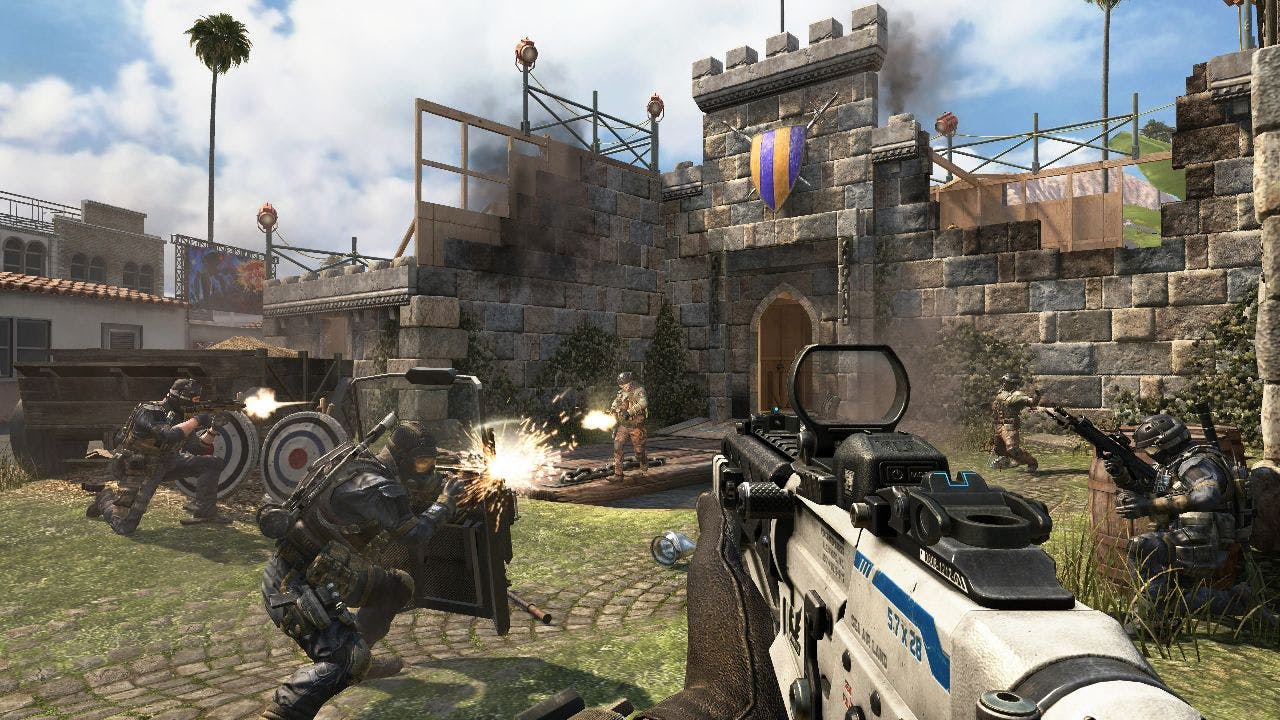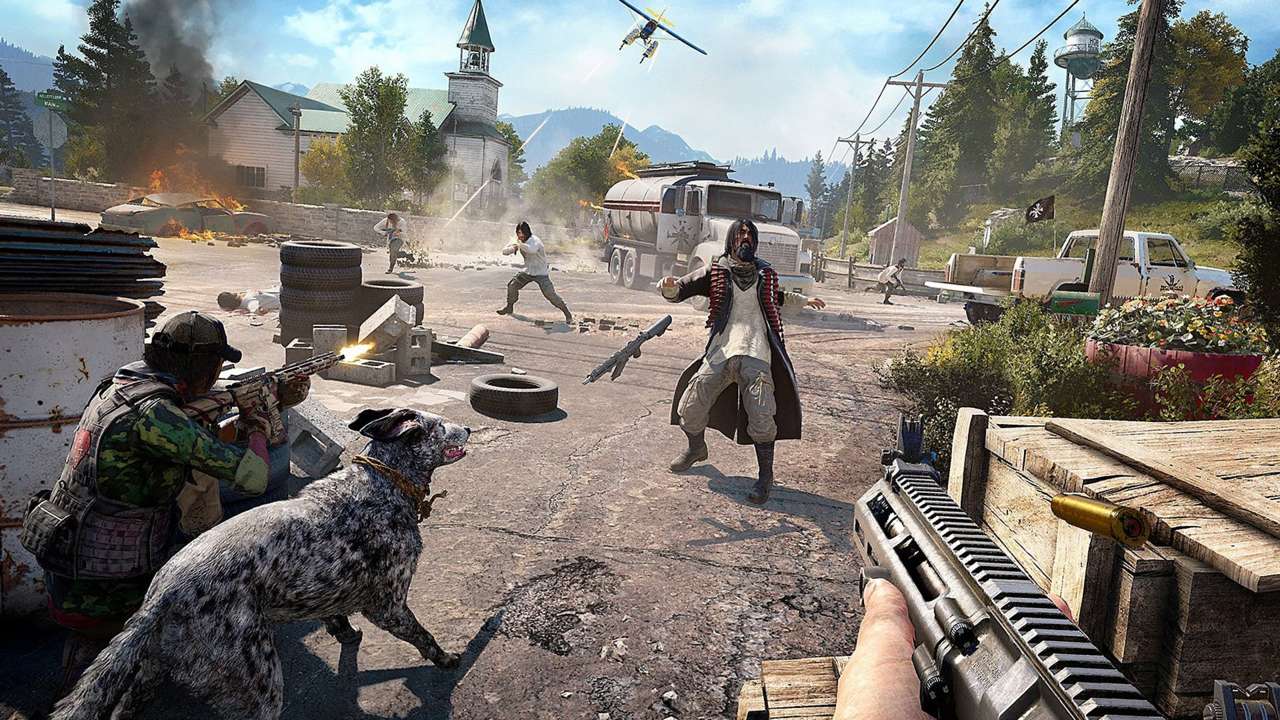How To Improve Your Aim In FPS Games [12 Strategic Tips]
Honing your aiming abilities in first-person shooters necessitates a combination of strategy, technical competence, and dedicated practice. By following these strategies and constantly refining your approach, you'll be better equipped to face opponents with confidence and precision, boosting your chances of hitting your target on the virtual battlefield.
Importance Of Good Aim In FPS Games
Precision aiming is a crucial ability required to succeed in first-person shooters. This key talent, while appearing obvious, is one of the most difficult to properly master due to the ongoing need for precise precision in every fight. In games that emphasize individual marksmanship or team-based objectives, your ability to target accurately is critical for eliminating opponents and winning.
Identify Your Skill Gaps First
Many gamers devote significant time to aiming but fail to investigate the underlying causes of variable performance. Are you reacting slowly? Do you find it difficult to track your opponent's movements? Several variables can contribute to aiming deficits. Identifying your individual deficiencies is an important first step toward development.
Instead of excusing missed shots, concentrate on determining the underlying causes of your inaccuracy. Some FPS games have a deathcam function, which replays the engagement and provides useful data for aim correction.
Once you've identified your issue areas, think about introducing aim-training apps into your regular routine for brief sessions. Remember, real-world games against human opponents is significantly more helpful than extensive practice against bots in a training environment.
Refine Your Mouse Settings
If you often over or under-adjust your mouse while aiming, your in-game sensitivity may need to be adjusted. Professional players explore with different sensitivities to determine the best setting for their playstyle.
This strategy can drastically improve your FPS skills. A higher sensitivity enables faster turns in the gaming environment, whilst a lesser sensitivity improves precision when targeting an opponent.
The goal is to strike a balance in which sensitivity is high enough to allow quick reactions to adversaries encircling you while remaining low enough to maintain precise shots. For more precise control, adjust your mouse's DPI and disable mouse acceleration in your operating system settings.
Optimize Crosshair Placement
Improper crosshair location is a typical issue among players who have difficulty aiming. Aiming at the ground is a formula for disaster in any FPS game. A serious competitor keeps their crosshairs at head level at all times. This reduces the distance between your crosshair and the target, allowing for more successful shots.
When anticipating an enemy's emergence from behind cover (e.g., a wall), avoid placing your crosshair too close to the edge. Your reaction time may be insufficient to fire accurately as soon as the opponent appears; they will most likely have passed through your crosshairs by the time you evaluate the situation and react.
This principle holds true even in games with compelling storylines, where the focus on narrative might sometimes distract from core gameplay mechanics like precise aiming. Instead, position your crosshairs slightly away from the wall. This creates a little buffer, giving you more time to respond while the enemy stays within your crosshairs' range, allowing you to make timely and precise shots.
Tailor Your Crosshair Dimensions
Customizing your crosshairs is an important first step in any FPS game. A narrower crosshair improves targeting precision by clearly indicating the bullet's point of contact. Some players like a small square, while others believe a dot crosshair helps their accuracy.
The size of the crosshairs is often determined by personal desire. Some may like a wider crosshair for spray firing, whereas a smaller crosshair is best for pinpoint shots. Adjust your crosshair size to suit your playing style.
Master Tapping To Manage Recoil
Recoil and weapon mechanics provide realism to shooter games. However, irregular crosshair movement might impair aiming accuracy. Tapping, often known as tap-firing, is an effective technique for managing recoil.
Instead of firing indefinitely (spraying), tapping entails rapidly clicking the mouse. Tapping enables for movement and recoil control, which keeps the crosshair from wandering off target. In some games, each weapon has a distinct recoil pattern - a predefined route that the crosshair takes under sustained shooting.
If spraying is your favorite strategy, become familiar with these recoil patterns. You can then offset the rebound by dragging your mouse in the opposite direction of the pattern, resulting in maximum spray accuracy.
Eliminate Sprint-Shooting
Similar to recoil, bullet spread happens when firing while sprinting, reducing accuracy as more rounds miss their target. The remedy is simple: don't constantly sprint in FPS games. Move slowly and silently while clearing corners.
The difference in bullet spread between sprinting and crouching is substantial. Crouching improves targeting precision by limiting player movement, resulting in less bullet dispersion.
Read Also: Proven Multiplayer Gaming Tips For Beginners And Pros
Prioritize Headshots
Headshots are an important aspect of good targeting in most first-person shooters. These accurate hits often deal substantially more damage than body shots, enabling for quick neutralization of opponents. Dedicated practice focused on continuously attacking the head is critical for increasing damage output and achieving quick victories.
Develop Tactical Awareness
Most FPS maps have key places suitable for campingor gaining a positional advantage. Learning these hotspots and continuously inspecting corners are important ways to ensure eliminations.
You can even pre-fire corners if you're certain an opponent is hiding there. Even without perfect accuracy, anticipating opponent positions can be extremely beneficial. This intuition is commonly referred to as "game sense" or tactical awareness.
Upgrade Your Equipment
Hardware plays an important role. A lightweight gaming mouse decreases the effort necessary to make targeting adjustments. A good workstation, chair, and mousepad can help to boost performance.
When purchasing a mouse, consider gaming-specific capabilities because it will be your primary aiming tool. A mouse with a dedicated DPI button enables on-the-fly DPI modifications. Mouse software allows for bespoke DPI settings and easy switching between them.
Use Cover Strategically
Engaging moving targets can be a significant issue. The judicious use of cover is an effective approach for boosting accuracy in these scenarios. Positioning oneself behind obstructions or barriers allows you to settle your aim and obtain some tranquility.
Use the "peek and shoot" tactic, temporarily exposing yourself to take shots then quickly retreating back to the protection of cover. This technique reduces your vulnerability while increasing your targeting efficacy.
Prepare Before Competing
Avoid jumping right into rated matches (or even casual matchups, if you value your record). A 10-15 minute warm-up activity might help you focus and mentally prepare for the competition. Warming up your hand muscles is as vital as stretching before a session at the gym.
Most FPS games have a training mode where you may practice your aim against bots or play brief warmup matches. If your game lacks this functionality, you may try using an aim-training app.
Maintain Composure Under Pressure
Maintaining a calm and concentrated mindset is essential for precise targeting. Avoid panicking or hurrying your shots, as this can lead to poor precision. Instead, establish a thoughtful approach, taking the time to properly line your sights before engaging. Consistent practice is essential; with time, aiming will become more instinctive, requiring less conscious effort and freeing you up to concentrate on other important parts of gameplay.
Frequently Asked Questions
Why Is My Aim In FPS Games So Bad?
The main cause for having bad aim is generally your ping (how fast your internet reaches your computer), the lower the ping, the better, but as your ping gets higher, you'll start lagging which can delay your ADS (Aim Down Sights) which will the effect the time you shoot, or just affect the speed when your aiming.
What Is A Good FPS To Aim For?
What should my FPS be for optimal performance? In general, most gamers recommend aiming for at least 60 FPS for smooth gameplay experience. However, this depends on the type of game you're playing some genres require more intensive graphics than others and thus require higher frame rates to function properly.
How Many FPS Does The Human Eye See?
Some experts will tell you that the human eye can see between 30 and 60 frames per second. Some maintain that the human eye may be able to see much more than that although more research is needed. Visual stimuli are measured in frames per second.
What Are The Best FPS Settings For Games?
Decent gaming experience can be had at 30 or 45fps, 60fps is where things start to get buttery smooth. If your hardware can handle a greater fps than its refresh rate, this can improve your gaming experience by reducing input lag.
Final Words
Aiming proficiency is sometimes the deciding factor in competitive outcomes. Dedicated training is just as important as actual gameplay, especially at the professional level. While mentorship might be useful, it is not always available. Hardware performance has a big impact on the gaming experience.
A system with insufficient specs might degrade performance, such as having a slow frame rate during important engagements. Optimizing your PC for better gaming performance will benefit your overall skill development.
You Might Also Like: Must-Have Gaming Accessories For PC

